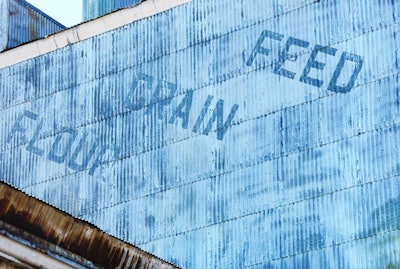
While large manufacturers took act in stride, small mills still struggle with FSMA compliance.
When President Barack Obama signed the Food Safety Modernization Act (FSMA) into law in 2011, the act was both praised and criticized as the single most sweeping reform ever attempted in U.S. agriculture.
Rhetoric in the feed industry was no exception, with the rumor mill churning out abundant talk of catastrophic costs and facility closures. But today, nearly a year into the full implementation of FSMA’s hazard prevention rules, the furor about compliance has died down for the most part.
While some of the industry’s largest players have taken the act in stride — discovering, some say, that they were happily in compliance with FSMA all along —, reports of mill closures continue to abound among smaller feed mills, which may lack the resources to conform to the rule’s new requirements despite extended deadlines and delayed inspections.
“Multinational corporations have dealt with food safety for years and years,” says David Fairfield, senior vice president for feed at the National Feed and Grain Association (NGFA). “But the animal feed industry is much more diverse and, in many cases, operations aren’t nearly as sophisticated. They didn’t have food safety people on staff, so FSMA came with a big learning curve.”
Smooth transition to FSMA compliance for large corporations
No one would say FSMA was easy to comply with, says Paul Davis, director of animal food safety and education for the American Feed Industry Association (AFIA). But on the whole, he says, the industry was well prepared to adapt.
“Our industry was already producing very safe animal food, so it was not such a momentous task,” he says, chalking up the “initial shock of the rule” to a general dislike of change and new regulations. “I don’t think anyone would say it’s easy because you’re dealing with safety and very difficult things. You don’t joke around about safety, but probably, early on, the reaction was perhaps more negative than it needed to be.”
Once the initial shock of FSMA passed, Davis says, industry leaders “started to dig in and ask questions.” For the feed industry, the hazard analysis requirement and the preventative controls associated with it represented the biggest changes. While the rule required specific measures to prevent, say Salmonella, many feed manufacturers were in good shape to comply with these rules, particularly large companies that had one or more employees dedicated to feed safety.
Many companies were able to repackage existing teams or initiatives to achieve FSMA compliance, Davis says. In some cases, feed companies needed to write down and formalize existing procedures. Many, at the very least, found they needed to elevate controls for specific risks such as Salmonella where previously individual risks were treated with broader initiatives.
“Maybe they had their own plan or followed some other system, but to comply, you had to convert some of that over to meet the requirements with the language,” Davis says. “I think that affected more facilities than anything else.”
FSMA prompts closures, consolidation
While Davis says he’s not aware of any feed mill closures attributed to FSMA, he also acknowledges that most of AFIA’s members represent large mills and manufacturers. Representatives at the other end of the industry tell a different story.
“I’m aware of a number of companies that, because of the FSMA requirements and probably other factors, have chosen to close facilities or consolidate into fewer facilities as a means to hopefully be able to comply because there is a cost involved,” Fairfield says.
At facilities that did not already have a feed safety plan of some kind on hand—mostly smaller mills, Fairfield says —, the hazard and prevention provisions of FSMA taxed company resources. Consolidation eliminated the need to develop plans for multiple facilities in some cases and it also addressed a manpower problem.
“To have someone who is qualified to identify hazards and implement controls,” Fairfield says, presented a significant challenge, “particularly for smaller feed mills that don’t have the background to do that type of thing.” Smaller companies also often lacked the financial ability to hire the expertise necessary to fill the gap.
Even those who could bring in a consultant, Fairfield says, still faced a staffing problem. “These are new requirements,” he says. “You could go out and hire someone to help you, but still, the facility needs to be able to implement the plan and demonstrate that it’s working. A lot of companies… haven’t built up their staffing to accommodate this type of activity.”
Many small mills chose to close or otherwise made business decisions shortly after FSMA’s first rules became available, Fairfield says. He anticipates another round of closures could come in the months ahead, as more companies gain experience with the U.S. Food and Drugs Administration’s (FDA) inspection expectations.
“How those inspections go will be a factor in how small businesses comply or choose to consolidate moving forward,” he adds.
Questions about compliance remain
The real FSMA compliance hurdle, for small and large feed mills alike, is passing the first FDA inspection, Fairfield says.
“We certainly have rules that have come out and have been available for us to read through and look at for a number of years,” he says. “But it’s really the inspection activity that sets the bar. I think we’re still trying as an industry to learn from the inspection experiences, just what the requirements mean.”
Overall, the FDA has taken an educational approach to the inspection process and the number of citations remains “pretty minimal,” Fairfield says. “But they have left facilities with a number of what they would call observational items that they have indicated would require action. Over time, I think the educational approach is going to diminish and the FDA will take a more regulatory approach.”
It’s also worth noting that the majority of inspections to date have taken place at larger facilities. Due to delays in the FDA’s inspection schedule, inspections for businesses classified as “small” began just this past fall, Fairfield says.
Additional regulation to come
While the majority of the deadlines for compliance with FSMA’s hazard and prevention rules have passed — “very small” feed mills with annual sales of less than US$2.5 million had to comply with hazard prevention rules by mid-September 2019 —, a handful of unsettled items remain.
The FDA has extended a handful of specific deadlines out through early 2021, including deadlines for FSMA’s so-called “written assurances” rule. This provision allows feed manufacturers to pass a hazard to downstream consumers with a guarantee that the customer will control the hazard. The FDA is still working out the details of this provision, which may require additional rulemaking, according to the minutes of an October 2019 presentation by Jenny Murphy, a consumer safety officer for the FDA.
The FDA recently took some by surprise when, in November 2019, the agency released a proposed rule defining requirements for accredited laboratory testing of many food products. Though required by FSMA, the accreditation rule wasn’t expected to see daylight for several more years. It remains unclear what impact the rule will have on the feed industry and industries named specifically for oversight under the rule, including egg production.
Other rules outlined by FSMA — traceability requirements, for example — have yet to materialize. But on the whole, Davis believes the feed industry has put FSMA behind it. AFIA, he said, is now turning its attention to new issues, including African swine fever and streamlining the GRAS process.

















